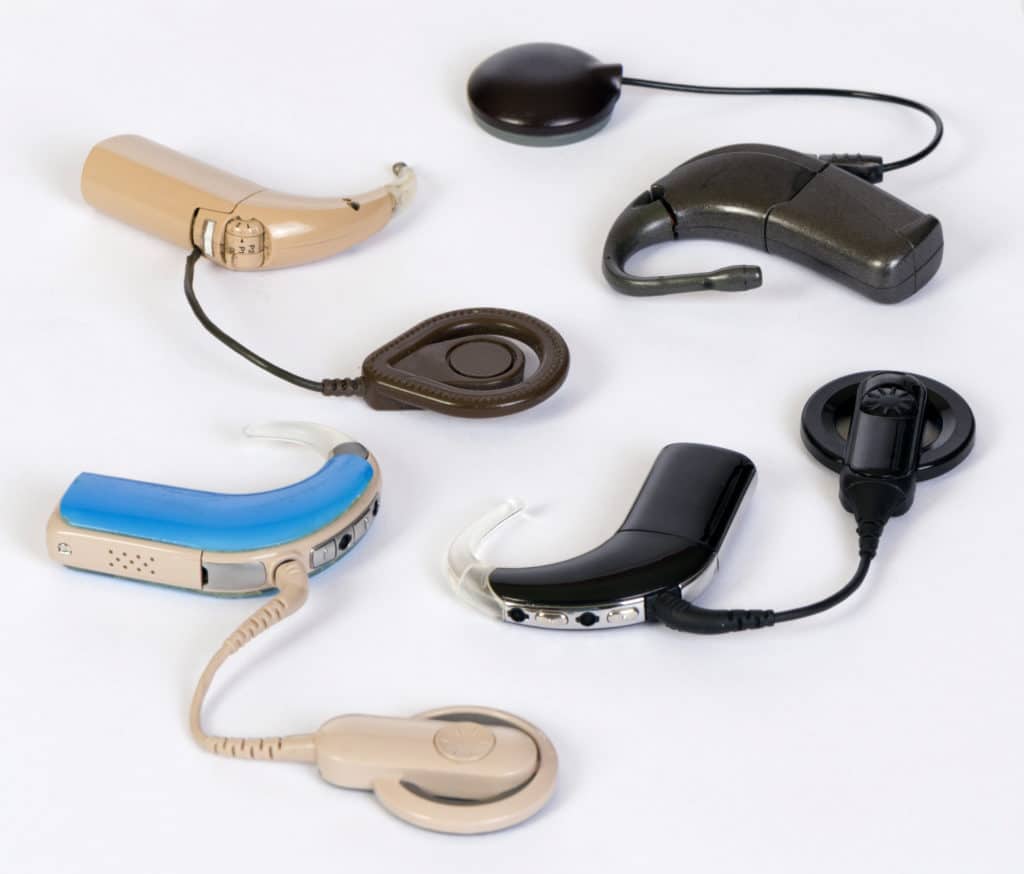
Cochlear implants make headlines
Cochlear implants (CIs) made the news in recent weeks as the FDA approved new advances in cochlear technology. Science and medical professionals applaud the technical achievement, but the announcement means much more for those who rely on CI technology for greater accessibility.
The brief history of cochlear implants

Believe it or not, cochlear implant technology is relatively new, being developed in stages from the 1950s through the early space age. Multi-channel cochlear implants were first approved by the FDA in 1984. Today, it is estimated that more than 100,000 people in the US — some 60,000 adults and 40,000 children — have a cochlear implant.
Unlike hearing aids, which amplify sound, the modern CI delivers sound signals directly to the hearing (auditory) nerve. A small device attached outside the ear captures sound signals and sends them to tiny electrodes implanted in the inner ear (cochlea). The brain interprets these signals as sound. And, though these sounds aren’t quite the same as normal hearing, cochlear implants have brought a world of sound to people who otherwise would remain virtually deaf. A friend with a CI calls the device “a miracle.”
Until recently, CIs presented other accessibility challenges, too, some of which can now be addressed. Accessibility improvements with new CIs range from everyday tasks, like daily exercise and better streaming connectivity, to significant health concerns, including socially-distanced telehealth and MRI scanning.
The great (and more accessible) outdoors

Cochlear Limited announced FDA approval of several technology advances that make life with CIs more accessible. New software enhancements connect the device to a smartphone app. This means the device can be turned on and off without using an external button.
Eliminating external buttons on the device itself results in a smaller, more manageable device, increasing both comfort and aesthetics. But there’s another benefit: the smaller, tighter design also makes the devices more water-resistant. This means it’s now easier than ever for people with cochlear implants to exercise and enjoy outdoor activities.
Better connectivity for cochlear implants
Of course the connected app can do more than power a cochlear implant on or off. It also enables fine tuning of sound quality and direct streaming of content from Bluetooth enabled devices. But, in the age of COVID-19, perhaps the best (and most timely) improvement is that the app contains an at-home hearing test. Audiologists can then access the results remotely, so they can monitor a patient’s progress without an in-person office visit.
Safer, more comfortable MRIs
People who wear cochlear implants and who also need an MRI, will see even greater health benefits. Doctors increasingly use MRIs to detect and diagnose medical conditions. However, access to this potentially life-saving resource has been limited for people with a cochlear implant. That’s because an MRI (Magnetic Resonance Imaging) uses a powerful magnet that conflicts with the CI’s own magnet. Workarounds include surgical removal of the implant, patient sedation, or wrapping the head in heavy material before undergoing an MRI. (You may be interested in how Johns Hopkins Hospital explains these considerations to patients before they schedule an MRI.)

The expense and health risks of surgery and sedation can be a heavy burden. And wrapping the head is not sufficient to counteract the strong magnetic force of an MRI. Patients who try it often complain of pain, discomfort and increased stress. Following FDA approval of a design improvement, new implants from Med-El Synchrony allow the magnet in the implant to rotate, counteracting harmful side effects. With a safe and comfortable process available, the MRI becomes a more accessible tool. Now, MRIs can deliver more effective medical care to children and adults, whether or not they have a cochlear implant.
Yes, I Can
Most of us take for granted our access to medical imaging or Bluetooth technology. Going forward, people with a cochlear implant can just as easily access these life-improving, and lifesaving, technologies too. And, whether you see it as a small advance, or a giant leap, one thing is certain: greater accessibility for those who need it is definitely a step in the right direction.
The journey toward greater accessibility is one of slow, steady progress. But patience is a virtue. So, we wait for progress and we celebrate the wins. Today, more people can say, “Yes, I can.” “Yes, I can” hear as well as others. “Yes, I can” pursue my dream because I am not limited by my hearing loss. “Yes, I can” conquer life.
Engage. Belong. Conquer together.
Do you, or does someone you know, have a cochlear implant? If so, how has it affected you? What do you think about these new improvements in CI technology? Tell us! Thanks for being a part of our community.
Don’t forget to like us on Facebook. Let’s #conquerlife together!

